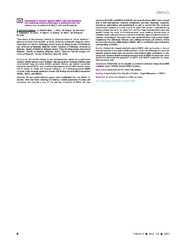Приказ основних података о документу
Osimertinib is selective against NSCLC cells and modulates the multidrug-resistant phenotype in patient-derived cell cultures and co-cultures of NSCLC cells and fibroblasts
| dc.creator | Jovanović Stojanov, Sofija | |
| dc.creator | Podolski-Renić, Ana | |
| dc.creator | Dinić, Jelena | |
| dc.creator | Dragoj, Miodrag | |
| dc.creator | Jovanović, Mirna | |
| dc.creator | Stepanović, Ana | |
| dc.creator | Lupšić, Ema | |
| dc.creator | Bajović, Radovan | |
| dc.creator | Glumac, Sofija | |
| dc.creator | Marić, Dragana | |
| dc.creator | Ercegovac, Maja | |
| dc.creator | Pešić, Milica | |
| dc.date.accessioned | 2023-05-26T11:30:03Z | |
| dc.date.available | 2023-05-26T11:30:03Z | |
| dc.date.issued | 2023 | |
| dc.identifier.uri | http://radar.ibiss.bg.ac.rs/handle/123456789/5712 | |
| dc.description.abstract | Background: Osimertinib belongs to the third-generation epidermal growth factor receptor (EGFR) tyrosine kinase inhibitor (TKI) approved for metastatic EGFR-mutant non-small-cell lung carcinoma (NSCLC) patients. Herein, we studied osimertinib selectivity towards NSCLC cells, its efficacy dependence on the EGFR mutation status, and its ability to evade the classical mechanism of multidrug-resistance (MDR) mirrored in the increased expression of main ATP Binding Cassette (ABC) transporters (ABCB1, ABCC1, and ABCG2). Methods: Primary patient-derived cultures were established from the NSCLC resections. After short-term culturing (2-3 weeks), a mixed population of cancer and non-cancer cells (around a ratio of 1:1) and two co-cultures of NSCLC cell lines (sensitive NCI-H460 and MDR NCI-H460/R) with lung fibroblasts MRC-5 were treated with 8 chemotherapeutics (cisplatin, carboplatin, paclitaxel, docetaxel, etoposide, vinorelbine, gemcitabine, and pemetrexed) as well as osimertinib. The maximum concentration reached in human plasma to which the patient is exposed during therapy (Cmax) was set as an upper limit and four lower concentrations were also applied during the study. Immunofluorescence assay enabling discrimination of epithelial cancer cells positive to a cocktail of antibodies against cytokeratin 8/18 vs. negative mesenchymal non-cancer cells was conducted using high-content imager ImageXpress Pico (Molecular Devices) with CellReporterXpress 2.9 software. Within the same immunoassay, MDR markers (ABCB1, ABCC1, and ABCG2) were analyzed by corresponding antibodies. Results: Osimertinib showed selectivity against NSCLC cells, particularly in the patient-derived cell culture without EGFR mutations. Other chemotherapeutics were not selective towards cancer cells, on contrary, they showed higher cytotoxicity in non-cancer cells. Osimertinib did not change the expression of ABCB1 in cancer cells, but it significantly decreased the expression of ABCC1 and ABCG2 transporters in cancer and non-cancer cells. Conclusions: Osimertinib can be valuable as a selective anticancer drug and an MDR modulator even in NSCLC without EGFR mutations. | sr |
| dc.language.iso | en | sr |
| dc.publisher | Elsevier Inc. | sr |
| dc.relation | info:eu-repo/grantAgreement/ScienceFundRS/Ideje/7739737/RS// | sr |
| dc.rights | openAccess | sr |
| dc.rights.uri | https://creativecommons.org/licenses/by-nc-nd/4.0/ | |
| dc.source | Abstract Book of the ESMO Targeted Anticancer Therapies Congress (TAT); 2023 Mar 6-8; Paris, France | sr |
| dc.title | Osimertinib is selective against NSCLC cells and modulates the multidrug-resistant phenotype in patient-derived cell cultures and co-cultures of NSCLC cells and fibroblasts | sr |
| dc.type | conferenceObject | sr |
| dc.rights.license | BY-NC-ND | sr |
| dc.rights.holder | © 2023 European Society for Medical Oncology. Published by Elsevier Inc. | sr |
| dc.citation.issue | 69p | |
| dc.description.other | Abstract Book of the ESMO Targeted Anticancer Therapies Congress (TAT); 2023 Mar 6-8; Paris, France. Elsevier Inc; 2023. p. 69p. (ESMO Open; Vol. 8; No. 1S2) | sr |
| dc.identifier.doi | 10.1016/j.esmoop.2023.100927 | |
| dc.type.version | publishedVersion | sr |
| dc.identifier.fulltext | https://radar.ibiss.bg.ac.rs/bitstream/id/12989/bitstream_12989.pdf | |
| dc.citation.rank | M34 |

